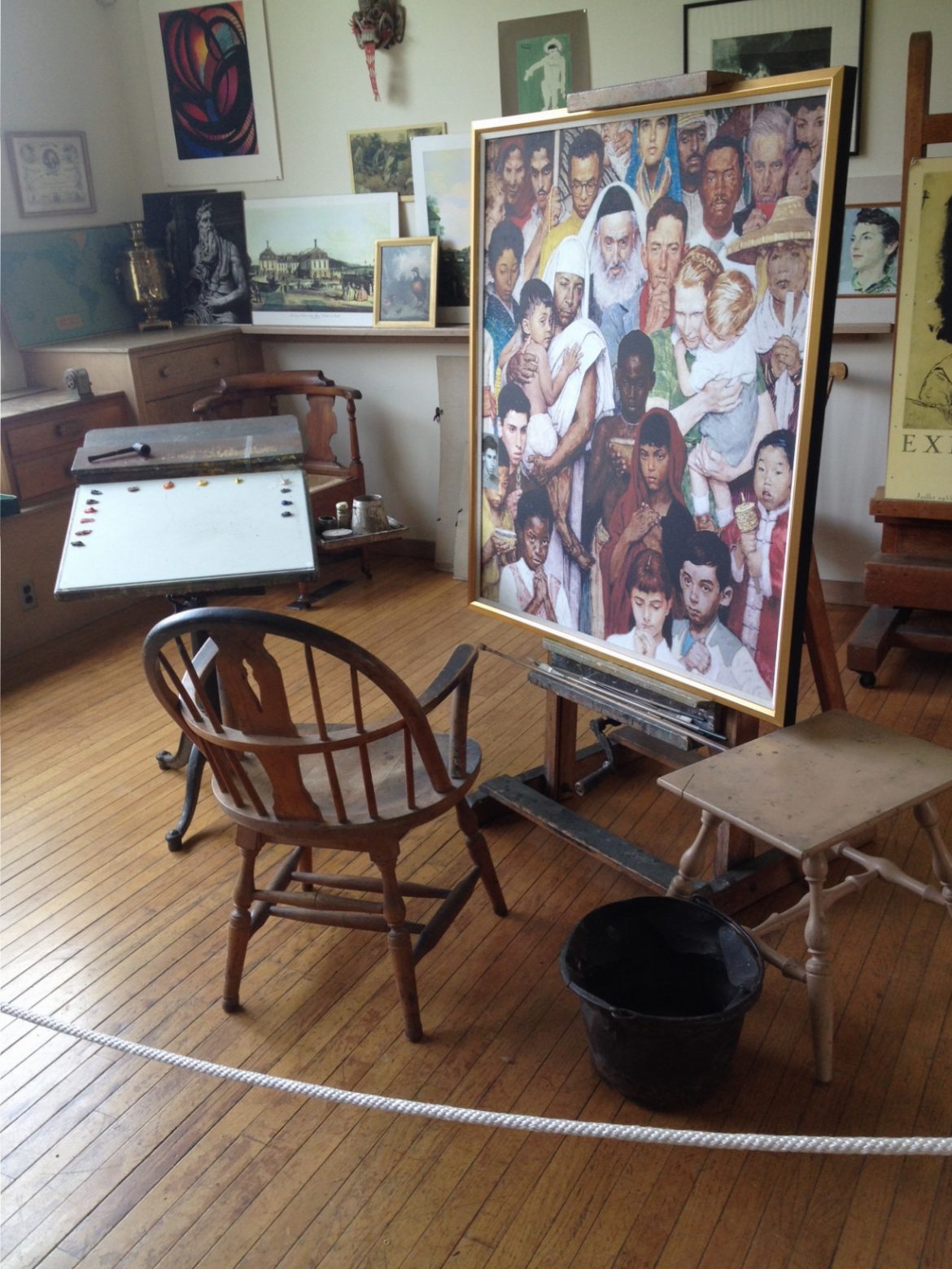
A Visit to an Artist’s Studio

A Visit to an Artist’s Studio
By: claycormany in Life in General
When I was a kid, I loved going to my grandparents’ house and looking through the different magazines they kept by their sofa. One of my favorites was The Saturday Evening Post, which often featured a funny cover illustration by Norman Rockwell. One of my favorite Rockwell illustrations showed a caged lion staring longingly at the sandwich of a nearby zookeeper. Another showed a small boy reluctantly lowering his trousers while a doctor prepares an injection. As a baseball fan, I also smiled at the illustrations that dealt with America’s favorite pastime. One that I especially enjoyed showed veteran Boston Red Sox players sizing up a baby-faced rookie who, with suitcase in hand, has just arrived in their locker room.
Yesterday, I toured the Norman Rockwell museum in Stockbridge, MA, and viewed many of illustrations and other pictures that Rockwell created over the span of his long career. Many, like those I saw years ago on the Saturday Evening Post covers, dealt with humorous or heart-warming scenaros, but others had a more serious subject. His “Four Freedoms” illustrations offer poignant flesh-and-blood vignettes, each one portraying one of the four freedoms articulated in a speech by President Franklin Roosevelt: freedom of speech, freedom of worship, freedom from fear, and freedom from want. There were also carefully rendered portraits of key American leaders: Adlai Stevenson, Dwight Eisenhower, John F. Kennedy, Richard Nixon.
Rockwell’s sensitivity to racial tensions in Post-War America came through in an illustration of two small black children, standing beside the moving van that has just brought their family’s possessions to a new neighborhood. Several feet away, a small group of white children eye the newcomers with uncertainty. The casual clothes of the white kids and the toys in their hands suggest they have lived in this neighborhood for awhile. Will they welcome the black children as playmates or shun them as outsiders? Rockwell’s picture leaves that question unanswered, but an adult peering at the scene from the window of a nearby house makes the viewer understand that the children may not have the final word on that issue.
Rockwell is quoted as saying that every one of his cover illustrations must tell a story without any words. If words were necessary to complete the story, he said, then the cover wouldn’t work. The truth of that observation can be seen in nearly all of Rockwell’s works, even those that never appeared on a magazine cover. There’s the soldier holding a newly arrived package from home and being closely followed by a host of other soldiers. No words are needed to show that the soldier’s “friends” hope he will share whatever the package holds. There’s the robe-clad father who slumps in his armchair while his well-dressed wife and children walk behind him. We don’t need words to understand that this family, except for the guilty father, is headed to church.
After leaving the museum, my wife and I visited Rockwell’s studio, which gave the artist a stunning view of the Berkshire Mountains. The studio itself was fairly simple. It consisted of a captain’s chair, an easle, and a large palette surrounded by completed paintings and an extensive library of art-related books. (Rockwell, we were told, was a big fan of Rembrandt and Van Meer). Near the easle, an odd-looking gold helmet sat atop a post. Rockwell purchased the helmet for a hefty sum in Europe, believing it to be a rare artifact, only to learn later that it was standard headgear for local firefighters.
As I left his studio, I wondered how Rockwell, who died in 1978, would have fared in our 21st Century World of Pinterest, Instagram, Facebook, and texting. In his own time, some critics regarded Rockwell’s work as “kitschy,” and he may have fared even worse in today’s society where incivility and arrogance often rule. But if nothing else, Rockwell’s work can still be appreciated for showing us that one can still see innocence, humor, and hope in a world where there is pain and conflict.
Tags: Four Freedoms, illustration, museum, Rockwell

